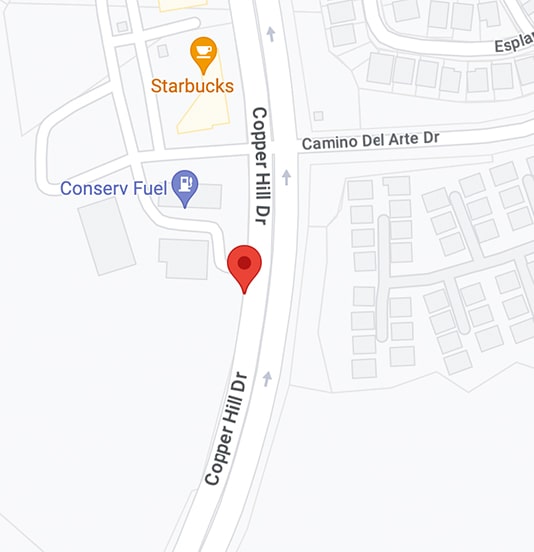Sleep apnea is a sleep disorder that causes breathing interruptions during sleep. These breathing interruptions, which can happen multiple times throughout the night, can rob you of restful sleep and affect your overall health. If you find yourself feeling unrefreshed after a full night's sleep, suffering from daytime drowsiness, or experiencing loud snoring, you could be dealing with sleep apnea. At Valencia Advanced Dentistry At Copperhill Smiles, we specialize in diagnosing and treating sleep apnea in Santa Clarita, CA. Contact us today to schedule a consultation.
What Sleep Apnea Means
This potentially serious sleep disorder occurs when there are repeated pauses in breathing while sleeping. These pauses, called apneas, can last from a few seconds to minutes and can occur many times in an hour. When your oxygen levels drop, a survival reflex kicks in, briefly waking you up so you can breathe again.
The two major types of sleep apnea are:
- Obstructive sleep apnea (OSA) – OSA happens when the soft tissues at the back of the throat relax and collapse, blocking the airway.
- Central sleep apnea (CSA) – This less common type happens when the brain fails to send proper signals to the breathing-controlling muscles.
Regardless of the type, sleep apnea significantly disrupts sleep quality and can have serious health consequences if left untreated.
Who Suffers From Sleep Apnea?
Persons of all ages can develop sleep apnea. However, this sleep disorder happens in certain circumstances and groups. Below are some people who might be at higher risk:
Obstructive Sleep Apnea (OSA)
OSA tends to affect adults over 40, with the risk increasing as you get older. Men are also more likely to develop OSA than women. Excess weight, particularly around your neck area, can place additional pressure on the airway, making breathing difficult during sleep.
If you have a family history of sleep apnea, your risk is also elevated. Black, Hispanic, and Asian individuals are more likely to experience this condition. Additionally, certain anatomical features, such as a naturally narrow airway, a large tongue, or enlarged tonsils, can increase the likelihood of developing OSA.
Central Sleep Apnea (CSA)
CSA is less common than OSA, but it tends to be more prevalent among older adults over 60, and again, men seem to be at higher risk. Individuals with heart conditions, such as congestive heart failure or atrial fibrillation, are also more susceptible to CSA.
Neurological conditions affecting the brain, like stroke or Parkinson's disease, can disrupt the signals that control breathing, potentially leading to CSA. If you live in places with high altitudes, you are likely to have central apnea. Also, long-term use of opioid pain medications can increase your risk for CSA.
The Frequency of Sleep Apnea
Sleep apnea is a surprisingly widespread condition. About 5 to 10 percent of the world's population has sleep apnea. It is also estimated that over 22 million Americans suffer from sleep apnea, with the majority of cases going undiagnosed and untreated.
Obstructive sleep apnea is significantly more common than central sleep apnea. Due to the underdiagnosed nature of sleep apnea, the actual number of people dealing with this condition is likely much higher.
How Sleep Apnea Affects Your Body
Sleep apnea impacts your sleep quality, causing a ripple effect throughout your body. The repeated pauses in breathing and the subsequent drops in oxygen levels put a significant strain on your bodily systems. Sleep apnea impacts the different stages of sleep, including:
- Stage 1. This is the lightest stage that occurs immediately after you fall asleep. It entails 5% of your sleep. Stage 1 is often fragmented due to frequent waking up caused by apneas.
- Stage 2. This is a more stable stage of sleep, but sleep apnea can still cause brief awakenings and lower oxygen levels. Stage 2 is 45% to 50% of your sleep time.
- Stage 3. This is the deep sleep stage, essential for restoration. Also called slow wave sleep, stage 3 comprises 25% of your sleep. You can hardly wake up when at stage 3. Abruptly waking up leads to sleep inertia, which is a state of mental fog characterized by slow thinking. Sleep apnea can disrupt reaching this stage or significantly shorten the time spent in it.
- REM Sleep. The stage associated with dreaming and memory consolidation is frequently interrupted by apnea. When you are in the “rapid eye movement” stage, your eyes move beneath your eyelids.
You start in a light sleep stage (stage 1). Then, you move into deeper sleep stages (stages 2 and 3), cycling between them. Next, you enter REM sleep, where most dreaming happens. After REM, the cycle restarts with lighter sleep again. Each cycle lasts about 90–110 minutes. Most people experience four or five of these cycles during a full night's sleep, usually eight hours.
How Sleep Apnea Disrupts Your Sleep Cycle
When you have sleep apnea, your breathing pauses due to hypopnea and apnea.
- Apnea – This is characterized by a complete stop in breathing for at least 10 seconds. These apneas cause a drop in blood oxygen levels, triggering a stress response in your body. This response jolts you awake, often with a gasp or choking sensation, to restart your breathing.
- Hypopnea – This is a partial blockage of the airway, resulting in shallow breathing and a decrease in blood oxygen levels. Hypopneas, while less severe than apneas, still disrupt sleep and contribute to lowering your overall oxygen saturation.
The severity of sleep apnea is usually measured by the Apnea-Hypopnea Index (AHI), which indicates the number of apneas and hypopneas you experience per hour of sleep. Your AHI score is a major way to figure out how severe your sleep apnea is.
Mild Sleep Apnea (5–14 Events Per Hour)
Individuals with this level of sleep apnea experience significant daytime sleepiness, irritability, and difficulty concentrating. Those around them may notice snoring or observe pauses in breathing during sleep. Untreated mild sleep apnea increases the risk of developing various health problems over time, including high blood pressure and heart disease.
Moderate Sleep Apnea
The disruptive effects of sleep apnea become more pronounced in this category. Daytime fatigue, lack of focus, and mood swings can significantly affect quality of life. Partners are likely to notice loud snoring and frequent awakenings. You are likely to wake up from 120 to 240 times if you have an eight-hour sleep. Untreated moderate sleep apnea poses a higher risk of serious complications like heart disease, stroke, and diabetes.
Severe Sleep Apnea
This is considered a very serious level of sleep apnea. People with severe sleep apnea may experience severe daytime sleepiness, falling asleep unintentionally at work or even while driving. Memory problems, headaches, and cardiovascular problems have become increasingly common. Without treatment, severe sleep apnea carries a significant risk of life-threatening complications.
These constant disruptions, whether you become fully aware of them or not, prevent your body from progressing through the natural sleep stages. You might spend less time in deep sleep, where vital restorative processes happen, and less time in REM sleep, which is essential for memory consolidation and cognitive function. This fragmented and less restorative sleep leaves you feeling unrefreshed and fatigued, leading to a whole host of daytime consequences.
Symptoms Of Sleep Apnea
Sleep apnea presents several symptoms that can affect your physical and mental well-being. These include:
- Feeling tired and experiencing headaches when waking up. Even after seemingly adequate sleep, you might find yourself waking up feeling tired or even exhausted as if you hadn't rested at all.
- Daytime sleepiness. You might experience excessive daytime drowsiness, difficulty staying awake during routine activities, struggling to focus, or even dozing off at inappropriate times.
- Mood changes such as irritability, short temperaments, and difficulty regulating emotions.
- Loud, disruptive snoring, reported by a partner or bedmate. However, not everyone who snores has sleep apnea.
- Memory problems, difficulty concentrating, and a general feeling of brain fog.
- You might wake up frequently throughout the night, often without fully realizing why.
- Pauses in breathing while asleep that others witness. Your partner may notice you gasp for air, choke, or stop breathing altogether during sleep.
- Irregular breathing, periods of shallow breathing, or labored breathing.
- Insomnia.
- Sexual dysfunction.
- Feeling restless at night and sweating.
Sleep Apnea In Children
Like adults, children can also be affected by sleep apnea. Symptoms in children may slightly differ from those seen in adults. The most frequent signs you should watch out for include:
- Loud snoring.
- Breathing pauses during sleep.
- Restless sleep.
- Bedwetting.
- Night sweats.
- Heartburn or reflux.
- Irritability, hyperactivity, difficulty paying attention, or poor performance in school.
Causes of Sleep Apnea
The following are the different types of sleep apnea and their primary causes:
Obstructive Sleep Apnea (OSA)
Factors contributing to OSA include:
- Excess weigh Fat deposits around the upper airway can obstruct breathing.
- Neck circumference. People with thicker necks may have narrower airways.
- Narrowed airway. You might have inherited a naturally narrow throat, enlarged tonsils, or adenoids that block the airway.
- Nasal congestion.
- Smoking. Smoking increases inflammation and fluid retention in the upper airway.
- Alcohol and sedatives. These substances relax the throat muscles, worsening airway obstruction.
Central Sleep Apnea (CSA)
CSA is less common than OSA and often linked to underlying medical conditions such as:
- Congestive heart failure, atrial fibrillation, and other heart conditions.
- Nervous system damage and conditions such as Lou Gehrig’s disease or amyotrophic lateral sclerosis (ALS).
- Neurological diseases such as stroke, brain tumors, and Parkinson's disease.
- Long-term use of opioid pain medications.
- Hypoxia or low blood oxygen levels owing to high altitude.
- Using CPAP to treat OSA.
How Sleep Apnea Is Diagnosed
If you suspect you might have sleep apnea, the first step is to consult your dentist. They will review your medical history, and discuss your symptoms, sleep habits, medical conditions, and any medications you're taking. The dentist may examine your mouth to check for any physical abnormalities that could be contributing to airway obstruction. Also, they will assess your risk factors for sleep apnea, including factors such as age, weight, neck size, and family history.
Tests that are Done To Diagnose Sleep Apnea
Your dentist will likely recommend certain sleep tests to confirm a diagnosis of sleep apnea. These tests include:
- Overnight Sleep Study (Polysomnogram) – This is conducted at a sleep center or specialized clinic. A polysomnogram involves monitoring your breathing, heart rate, blood oxygen levels, brain activity, and other vital signs during sleep.
- Home Sleep Apnea Testing – This simplified test is conducted in the comfort of your own home. It usually measures your breathing, heart rate, blood oxygen levels, and airflow, providing valuable information for your specialist to make a diagnosis.
How Is Sleep Apnea Treated, And Is There A Cure?
Numerous effective treatment options for sleep apnea can significantly improve your sleep quality, alleviate symptoms, and reduce long-term health risks. The most suitable treatment plan for you will depend on the type and severity of your sleep apnea and other individual factors.
Conservative Treatments
For milder cases of sleep apnea or in conjunction with other treatments, these lifestyle adjustments and simple interventions can treat, reduce the risks, and prevent further sleep apnea:
- Maintaining modest weight. Aim for a healthy BMI (body mass index).
- Sleeping on your side rather than your back helps prevent gravity from narrowing your airway. There are special pillows, wedges, or positional devices designed to encourage side sleeping.
- If nasal congestion is a contributing factor, over-the-counter nasal sprays, decongestants, or adhesive strips may help to open nasal passages and improve airflow.
- Manage existing medical conditions that could worsen sleep apnea. For example, treatment for allergies, heart failure, or other health concerns.
- If medications like opioids or sedatives are contributing factors, alternatives or dosage adjustments can minimize their impact on your sleep.
- Limit alcohol and sedatives.
- Avoid heavy meals before bed.
- Exercise regularly for at least 30 minutes of moderate-intensity exercise.
- Quit smoking. Smoking damages the airways and increases inflammation, worsening sleep apnea symptoms.
- Consider a heart-healthy diet saturated with trans fats and high in fruits, vegetables, and whole grains.
Positive Airway Pressure (Pap) And Adaptive Ventilation
Positive airway pressure (PAP) is the standard treatment for moderate-to-severe OSA. PAP devices work by gently delivering a stream of pressurized air through a mask you wear while sleeping. This air pressure acts like a pneumatic splint, keeping your airway open and preventing it from collapsing. There are different types of PAP devices:
- Continuous Positive Airway Pressure (CPAP).
- Bilevel Positive Airway Pressure (BiPAP/BPAPI).
- Automatic Positive Airway Pressure (APAP).
- Adaptive Servo Ventilation (ASV).
Oral Devices
Oral appliances are a treatment alternative for those with mild to moderate obstructive sleep apnea. These custom-made mouthpieces are designed to reposition your jaw and tongue slightly forward, helping to maintain an open airway during sleep. The mandibular advancement device (MAD) is the most widely used type of oral appliance. It resembles a sports mouthguard and works by gently shifting the lower jaw forward, widening the space behind the tongue. Less common than MADs, tongue-retaining devices hold the tongue in a forward position to prevent it from falling back and blocking the airway.
Nerve Stimulators
Nerve stimulation is a newer treatment option for select individuals with moderate-to-severe obstructive sleep apnea who may not tolerate PAP therapy. There are hypoglossal nerve stimulators that deliver mild electrical stimulation to the hypoglossal nerve, which controls the muscles of the tongue. The stimulation keeps the tongue in a forward position, preventing it from collapsing and obstructing the airway during sleep.
Surgery
Surgical procedures for sleep apnea are typically reserved for cases where other treatments have proven ineffective or when specific anatomical abnormalities are contributing to airway obstruction. Here are a few types of surgical options:
- Somnoplasty – This minimally invasive procedure uses radiofrequency energy to shrink excess tissue in the soft palate and uvula, broadening the airway.
- Tonsillectomy/adenoidectomy – Enlarged tonsils or adenoids can be common culprits in sleep apnea, especially in children. Surgical removal of these tissues can create more space for airflow.
- Uvulopalatopharyngoplasty (UPPP) – A more involved surgery that involves removing excess tissue from the soft palate, tonsils, and pharynx to widen the airway.
- Jaw Surgery (Maxillomandibular Advancement) – In rare cases, surgery to reposition the upper and lower jaws forward can be an option to significantly enlarge the airway space.
- Nasal Surgery – For individuals with nasal obstructions, such as a deviated septum, surgical correction of these issues may improve breathing and help alleviate sleep apnea.
Surgery for sleep apnea is not always successful. Therefore, you should discuss the potential risks and benefits with your sleep specialist and a surgeon before considering these procedures.
Medications For Central Sleep Apnea
Medications are not the primary treatment for sleep apnea. However, certain drugs might help manage central sleep apnea (CSA). These medications often work by stimulating breathing or addressing underlying conditions that contribute to CSA. Some examples include:
- Acetazolamide.
- Oxygen therapy.
- Medications for heart failure.
Complications and Side Effects Of The Treatment
Treatments for sleep apnea are generally safe and effective. There can be some potential side effects or complications, depending on the chosen method.
PAP therapy can cause the following:
- Nasal congestion or dryness.
- Skin irritation from the mask.
- Feeling claustrophobic.
- Difficulty adjusting to the air pressure.
Side effects of oral devices include jaw discomfort or soreness, changes in tooth alignment, dry mouth, or excessive salivation.
Surgery procedures can bring about complications like pain and swelling after the procedure, infection, and bleeding. In some cases, the effectiveness might diminish over time.
Find A Competent Dentist Near Me
Sleep apnea is a serious but treatable condition. If you are constantly fatigued, snore loudly, or have pauses in breathing during sleep, it is time to seek medical intervention. Consult a dentist who specializes in sleep apnea to explore the best treatment options for your situation. With the right support and treatment, you can overcome sleep apnea and enjoy the restorative sleep you deserve. At Valencia Dentist, our team offers personalized sleep apnea diagnosis and treatment options. Reach out to our team in Santa Clarita at 661-775-7717.




